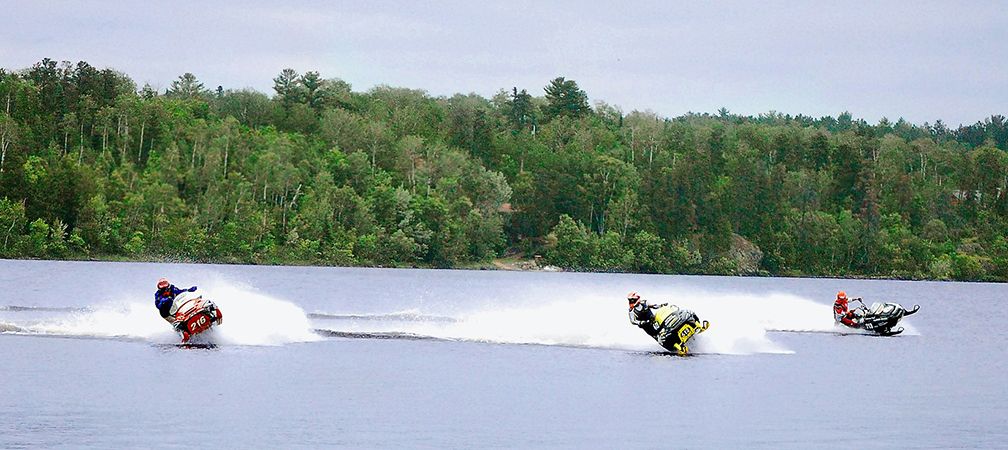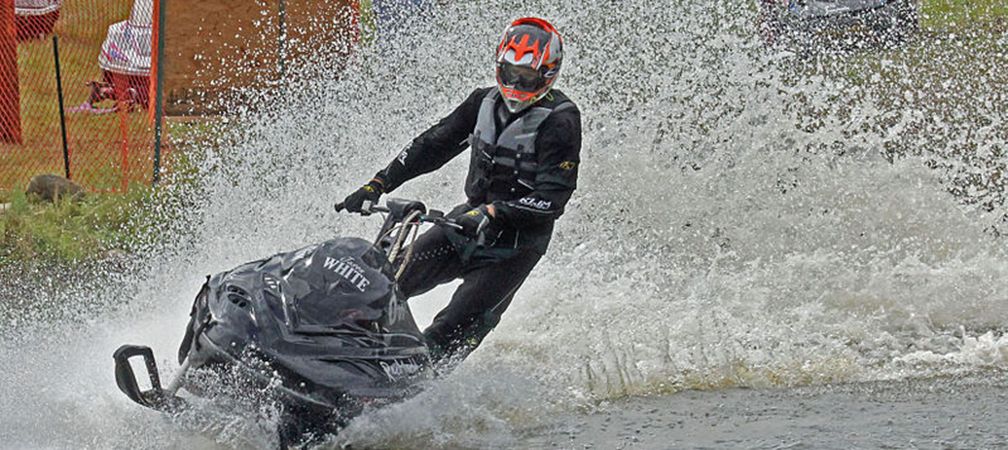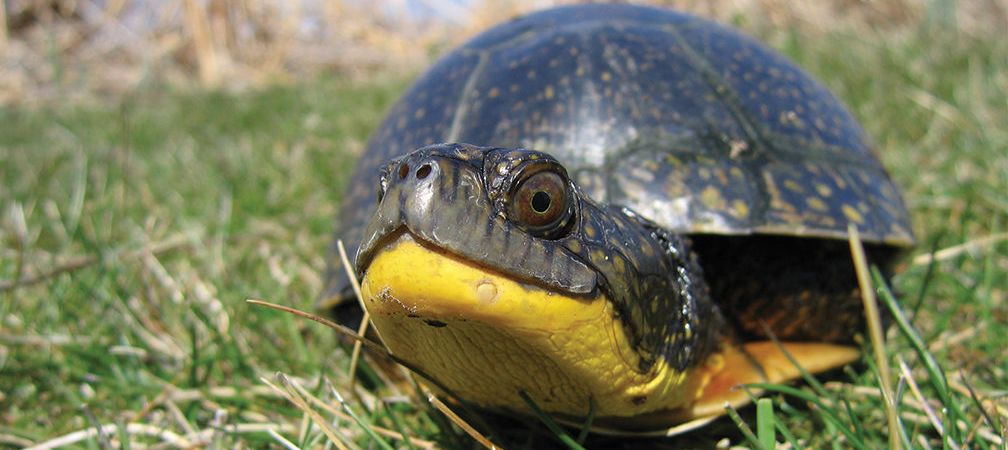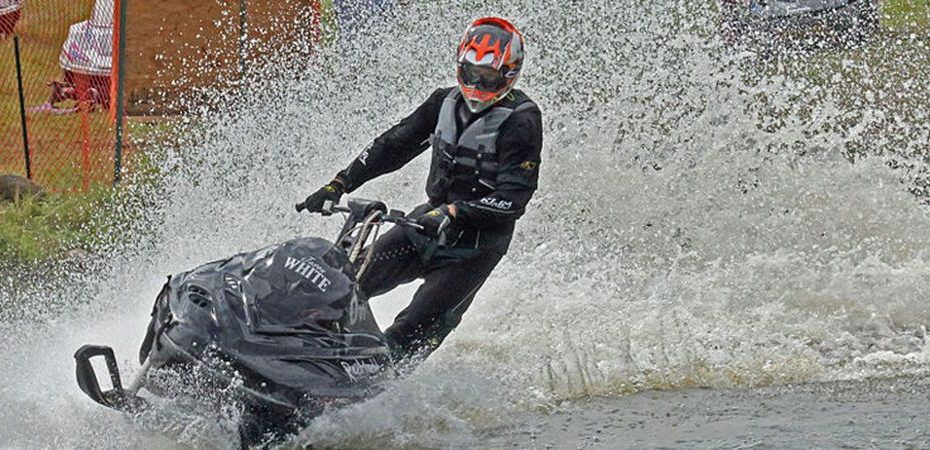Not expecting to hear snowmobiles in the summer? Be advised snowmobile watercross, known as watercross racing, is gaining in popularity and may be headed your way. Despite negative impacts on the environment, enthusiasts and novices are looking to grow this activity. Here’s what you need to know:

What is Watercross Racing?
Watercross racing uses modified winter snowmobiles referred to as ‘sleds’ for exhibition or racing, to enable the sled operator to skip, buck, jump and wheelie their way to ferocious speeds (well over 60 mph) across the surface of the water while navigating around a course.
This sport is noted for being fast, and very loud. Although the intention is to hydroplane ‘across’ the water, these sleds (weighing approximately 500 pounds) often sink to the bottom of the lake, pond, or river, serving as the arena. This is considered part of the fun, but this activity causes stress to wildlife and increases the potential for striking animals.
Every year, the Ontario Watercross Racing Association (OWRA) organizes two-day events of this type. An average race day may consist of about 160 to 200 watercross racers on the lake in a given day. This could potentially mean 80 to 100 sleds will sink to the bottom of the lake over the course of two days, followed by equally as many disruptions to the lakebed sediment when the sleds are retrieved.

Impacts on Nature
We are not looking to begrudge anyone having a good time and the OWRA is to be respected for having rules and requirements in place to minimize environmental damage during events. However, this does not alleviate the negative impacts and concerns.
Lakes, ponds, and rivers are critical habitats for many wildlife species, including species at risk such as turtles, and are valued by Ontarians for their beauty and low impact recreation like swimming and canoeing. The increased water vehicle activity and high-speeds impacts species at risk and other vulnerable wildlife, livestock, vegetation, soils, air and water quality, as well as people’s ability to peacefully enjoy nature.

Stay Informed
Ontarians should be aware of what watercross racing is should an event be proposed in their communities. The activity should at minimum be kept to communities that have already hosted such events. Ideally, the OWRA would create a facility designed exclusively for this sport, as opposed to introducing watercross into new environments and harming more waterbodies across the province.
With the passing of Bill 23 and the associated policy changes that stand to negatively impact Ontario’s ecosystems, more threats like watercross racing are a cause for concern.
Now more than ever we need to be good stewards of the nature. Indulging in recreational activities for entertainment while disregarding the environment falls into the realm of ‘just because we can doesn’t mean we should’.

Kelly Wallace has been drawn to turtles and nature since she was a child. Utilizing letter-writing campaigns she did what she could through the years to help with animal injustices. It was in 2016 when Kelly moved to Bancroft from Toronto with her husband that she found her footing in conservation. She began by devoting her energies to terminating the legalized hunting of snapping turtles in Ontario. Seeing how much more needed to be done to help turtles the day after the snapping turtle hunt was officially terminated on March 31, 2017 Kelly hit the ground running. She has since founded Think Turtle Conservation Initiative. A grassroots volunteer group focused of education initiatives, raising awareness through sign campaigns, turtle talks, public events, information sharing, and organized fundraisers and engaged in species recovery efforts to ‘effectively’ help the Ontario turtles and their habitat.
